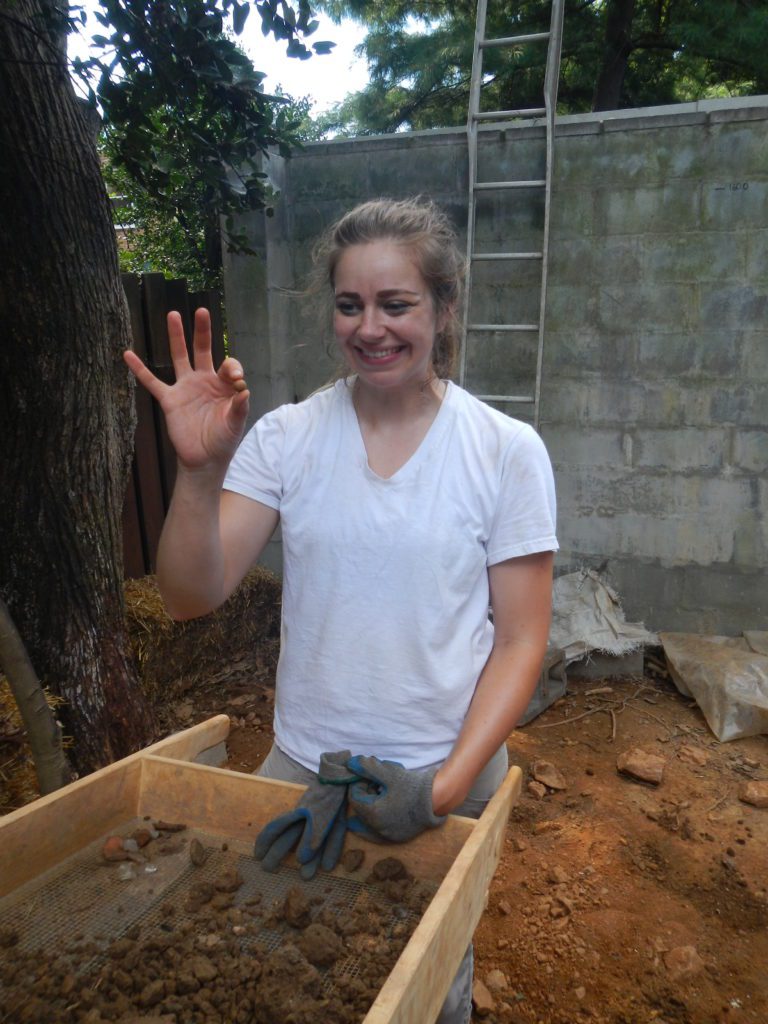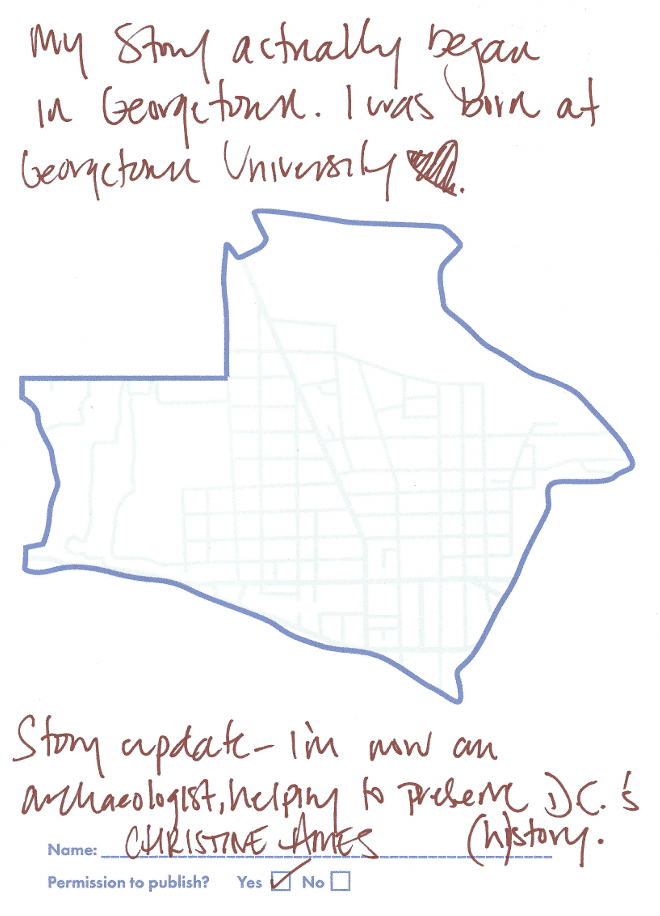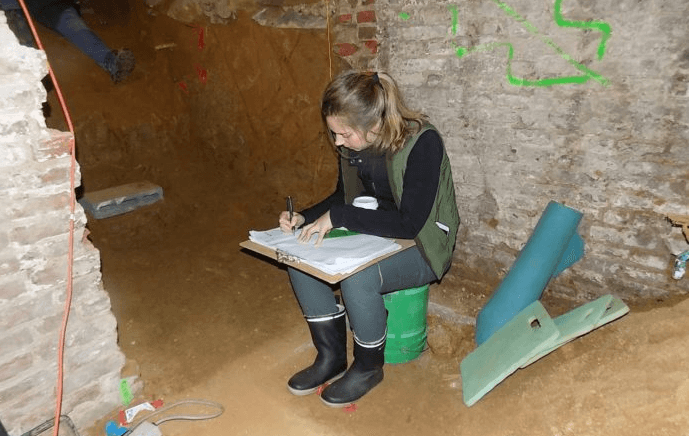Mapping Georgetown: Digging This Community
By • May 16, 2022 0 1932

“I was born at Georgetown University,” wrote Christine Ames, in her Mapping Georgetown tale. “Story update,” she told us, “I’m now an archeologist, helping preserve D.C.’s history! Few of our story tellers has probed as deeply into Georgetown’s past as Ames who serves as assistant city archaeologist for the District of Columbia.
In her story, Ames recounts searching for the remains of Yarrow Mamout (1736-1823), Georgetown’s most notable formerly-enslaved African from the nation’s early history. According to a December 3, 2020 article in The Georgetowner, Yarrow was a “learned West African Muslim” who “owned a home at 3324 Dent Place — a stop on the District’s African American Heritage Trail — adjacent to the site of the most recent burial excavations at 3317 Q St. NW. Enslaved for 44 years, Yarrow eventually purchased his freedom and became a noted financier” in Georgetown. Searches for Yarrow’s remains have been conducted in a variety of Georgetown settings with no confirmation yet determined.

From Christine Ames’s Mapping Georgetown story. Courtesy Mapping Georgetown.
Here’s Ames’s story:
Christine Ames’s Mapping Georgetown Story:
Hello Mapping Georgetown! I’m Christine Ames, a Registered Professional Archaeologist currently serving with the DC Historic Preservation Office. As part of the HPO Archaeology Team, I help conduct project reviews, educational outreach, and maintain the District’s archaeological collections for future generations. I’m a proud District resident & fortunate to help preserve the history of the city & tell the stories of those who came before us through material culture.
This has included the 2015 Yarrow Mamout community archaeology project, in Georgetown. While no resources definitively associated with Mamout were identified, there were artifacts related to the later occupation of the lot that reflect the later residents and their households. One type of artifact that was identified quite a bit was marbles. Marbles can indicate the presence of children, a group not easily captured in the archaeological record. Finding these scattered in yard fill soils perhaps paint a picture that people today can still relate to.
While the project has since wrapped, we still maintain the Yarrow Mamout Facebook page & post on related content as well as the DC Archaeology page. Follow us! https://www.facebook.com/DCArchaeology/
Thank you, Christine, for your heartwarming story. It inspires, encourages and makes causes noble.

Assistant City Archaeologist Christine Ames records data in the basement of a Q Street home. Georgetowner photo.
—
To learn more about the Mapping Georgetown project see https://georgetowner.com/articles/2021/07/19/marilyn-butlers-vision-for-mapping-georgetown/.
To submit your Georgetown recollections to Mapping Georgetown go to www.mappinggeorgetown.com or visit the Georgetown Public Library to pick up a physical map-story form to fill out.
Marilyn Butler can be reached at: marilyn.butler@gmail.com.

